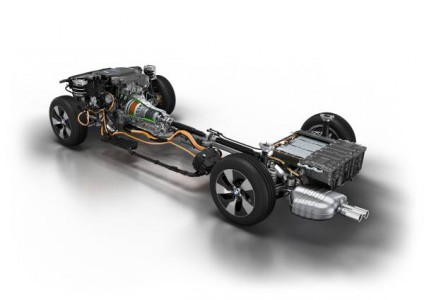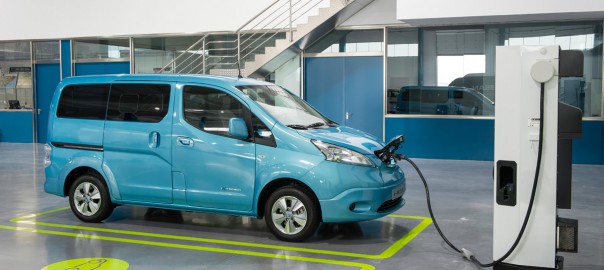
Munich/Miramas. The BMW Group is preparing to follow up its innovative and revolutionary BMW i models with plug-in hybrid versions of the core-brand models. In Miramas, France, it will present a BMW 3 Series plug-in hybrid prototype and a new generation of hybrid vehicle concepts incorporating technology already used in BMW i models. Long term, the BMW Group is planning to offer plug-in hybrid versions of all its core-brand models.
Herbert Diess, Member of the Board of Management BMW AG, Development, said:
“All BMW Group models benefit from BMW i. The fundamental technology involved in battery cells, electric motors and the power electronics will be used in our upcoming plug-in hybrid models. When it comes to the electrification of the drivetrain, we are deliberately developing a wide-ranging expertise in order to offer our customers worldwide the ideal solution.”
The plug-in hybrid models presented in Miramas are equipped with a highly efficient internal combustion engine and an electric motor powered by an externally rechargeable high-voltage battery. Shorter-distance urban trips or commutes can be completed on electric power only. On longer journeys, the vehicle will usually operate in “combined mode”, with both systems working together.
TheBMW 3 Series plug-in hybrid prototype combines a four-cylinder petrol engine with an electric motor. The internal combustion engine is based on the TwinPower Turbo four-cylinder petrol engine that has already twice been voted “International Engine of the Year”.
The electric motor and power electronics are directly based on the BMW eDrive technology already used in the BMW i3 and BMW i8 models. The prototype’s lithium-ion battery, including the battery management system and the high-efficiency direct cooling system, are likewise based on BMW i experience and know-how.
The plug-in hybrid technology is so flexible that it can be integrated in a wide variety of vehicle concepts. It will therefore be possible to deploy it rapidly across the BMW model range. The route to sustainable mobility in the future will be a multitrack one. The already efficient combustion engines will be even more economical. All-electric vehicles like the BMW i3 are tailored to urban mobility requirements while plug-in hybrids are more appropriate for longer-distance journeys. Beyond this, in the long term electric mobility in conjunction with hydrogen fuel cell technology could also be a viable option.
The focus of our Efficient Dynamics strategy is the electrification of the power train. This is an area in which we will continue to expand in the coming years. The plug-in technology will be one key lever to bring high performance vehicles well below 100 g / km CO2, while retaining the driving pleasure and driving dynamics of a BMW. We will also continue to develop fully electric mobility. Hydrogen fuel-cells will remain a key issue when it comes to drivetrain development, especially relating to its sustainable production.
Key eDrive technologies developed in-house
All the important eDrive technologies and components are developed in-house, and from next year they will all be built at the BMW plant in Dingolfing. This programme is set to create over 200 new jobs around electro-mobility at the BMW plant in Dingolfing. Many tens of millions of euros will be invested at this plant over the next five years.
Harald Krüger, Member of the Board of Management of BMW AG, Production stated:
“Our accumulated expertise guarantees us a competitive edge, this can be seen not only in the performance data of the BMW electric motors but also in our highly efficient production process.”
Since the BMW Group expects to be building a wide range of electric drive components in the future, production will be organised around an intelligent eDrive component-sharing system. This means that one and the same production line will be able to build high-voltage battery modules not just for the BMW i8 but also for the future BMW X5 eDrive. In the case of complete battery packs, too, the new production lines will be designed for a flexible production mix: it will be possible to build battery packs for a number of different future models all on the same lines.
Highly electrified hybrids
With the ongoing development and refinement of hybrid drive systems under the EfficientDynamics programme, the aim is to maximise the amount of time the vehicles are able to spend in electric mode. To ensure that this increased electric operation goes hand in hand with typical BMW dynamic performance, everyday practicality and maximum long-distance capability, the BMW Group’s future hybrids will be “highly electrified”. Highlights of this future Power eDrive technology will include much more powerful electric motors and batteries with twice the capacity of present versions.
The drive systems used in these future hybrid systems will offer combined outputs in excess of 500 kW. Also, the capacity of the lithium-ion batteries – up to 20 kilowatt hours – will be greatly in excess of current hybrid systems. Coupled with an increased all-electric driving range of up to 100 kilometres (62 miles), this will make it possible to operate in locally emission-free pure-electric mode on virtually all day-to-day trips.
Source: BMW Group

